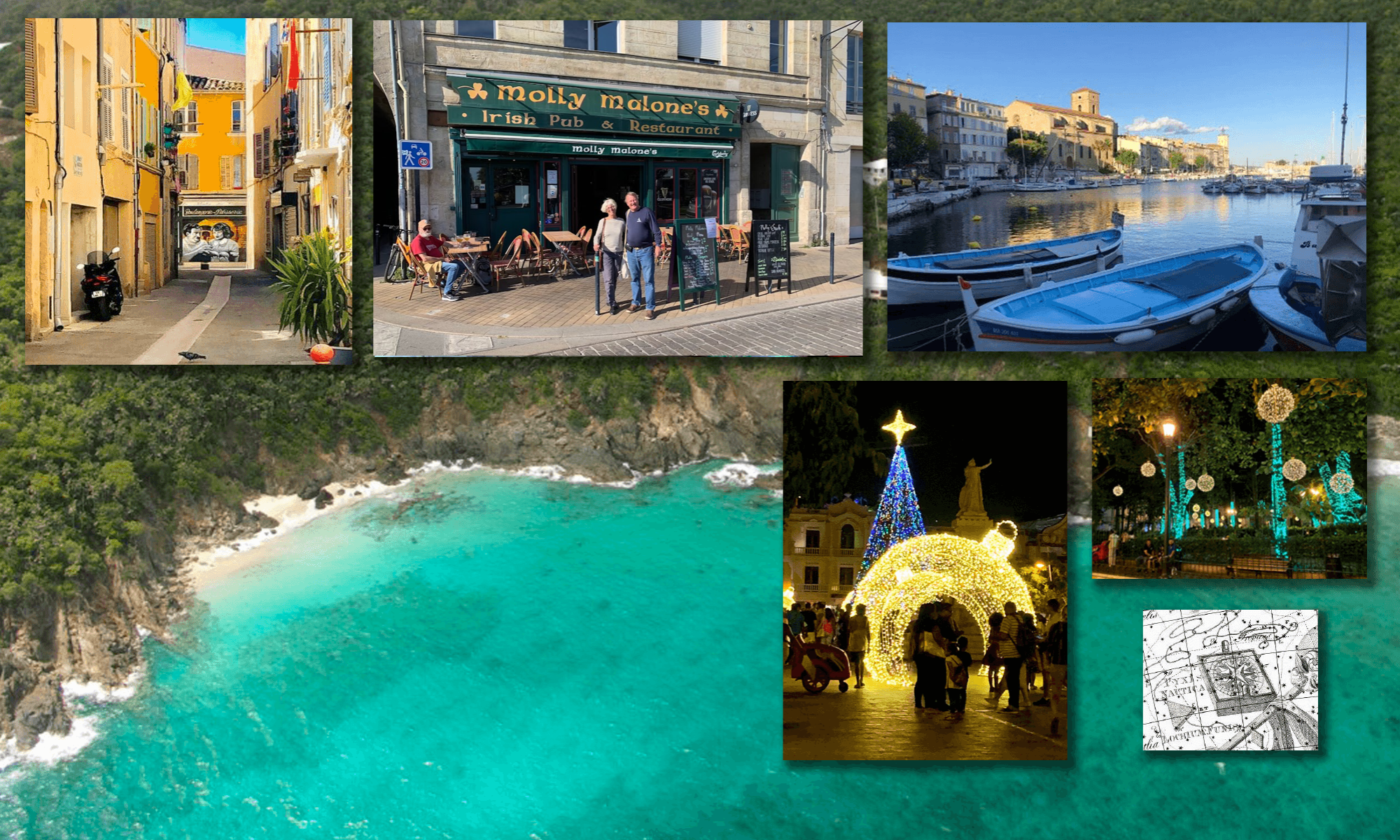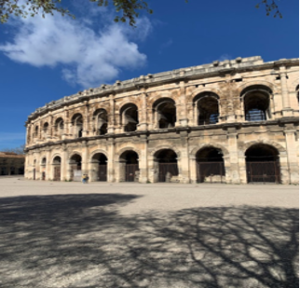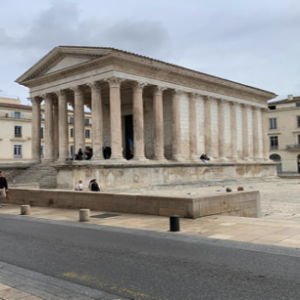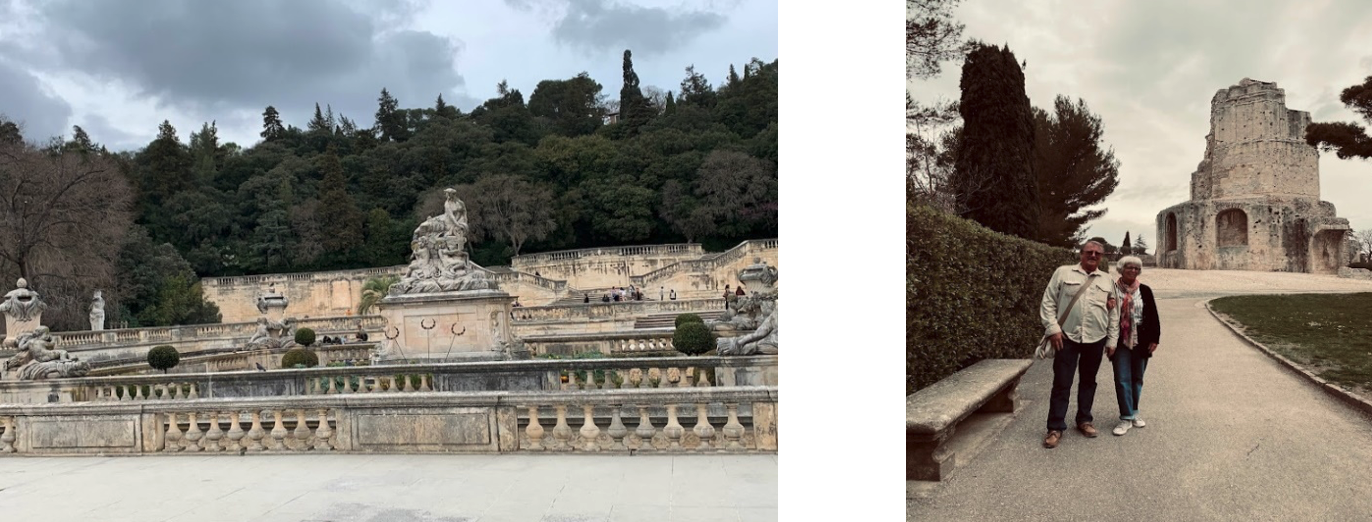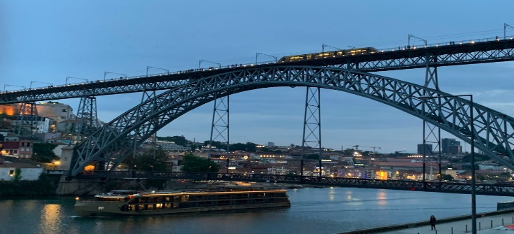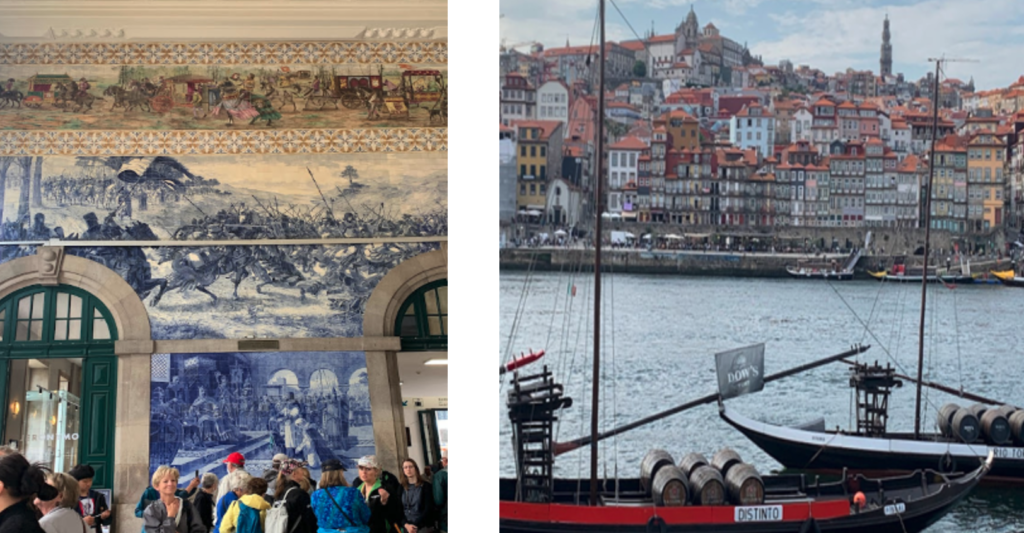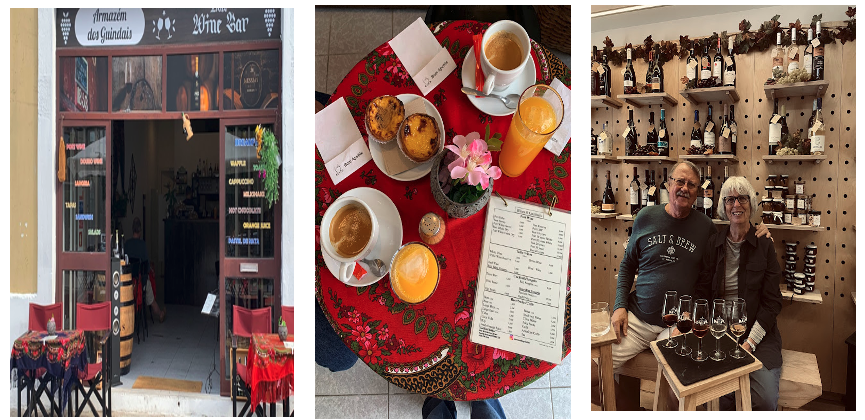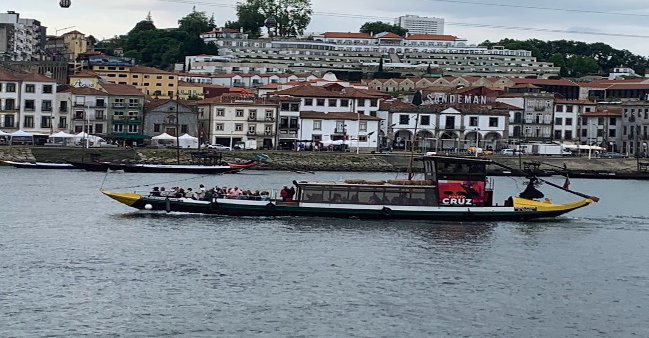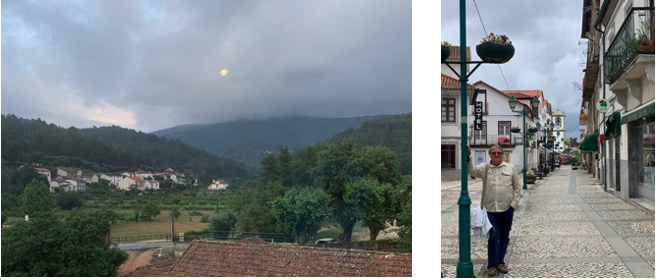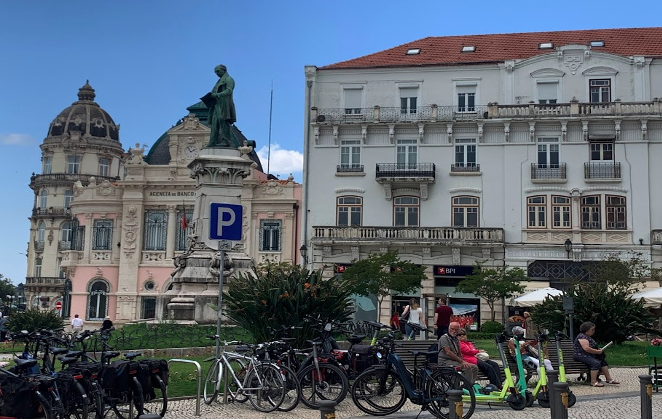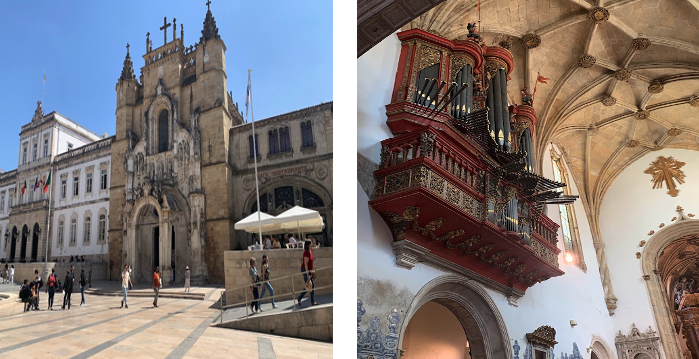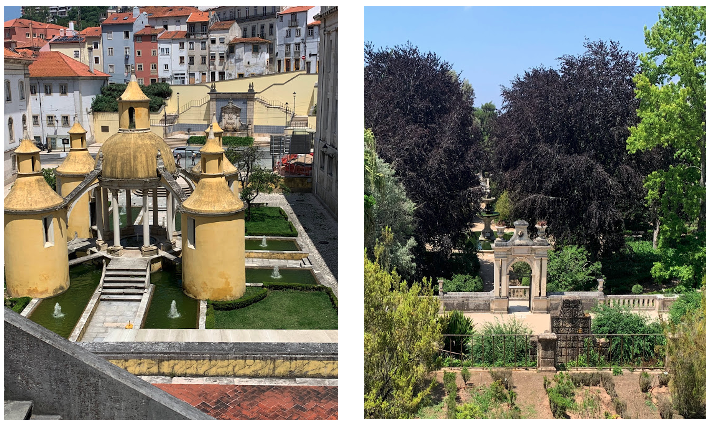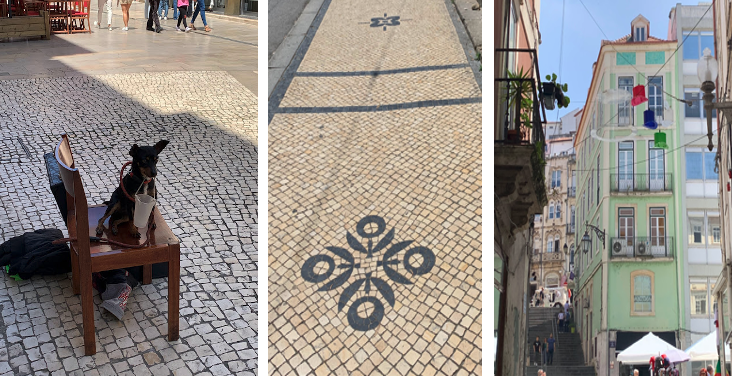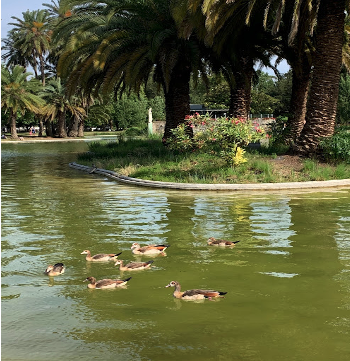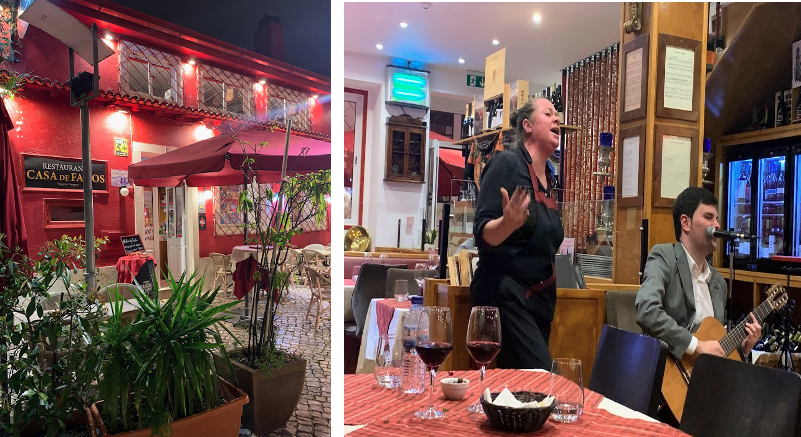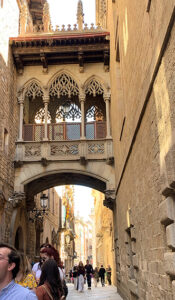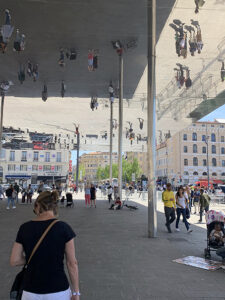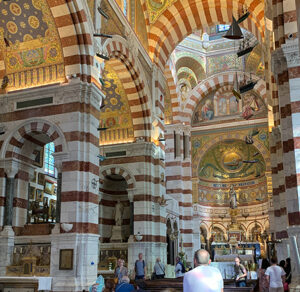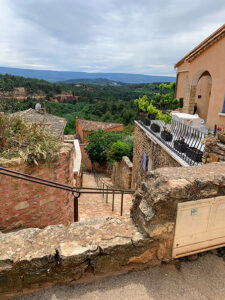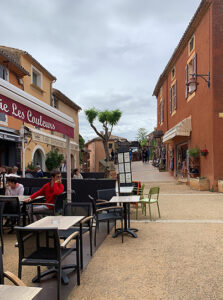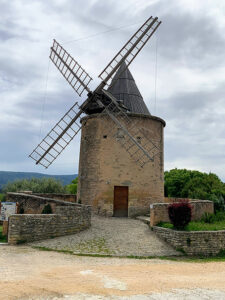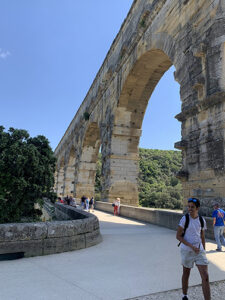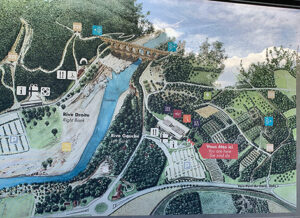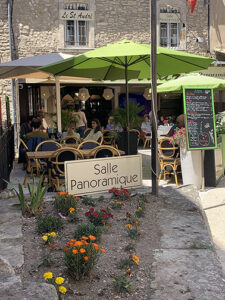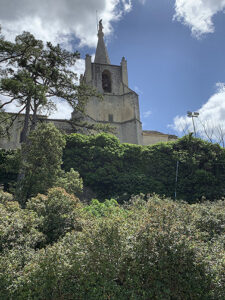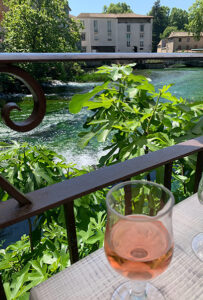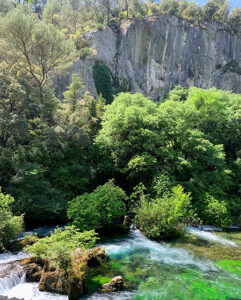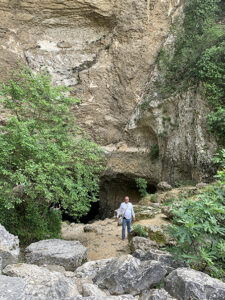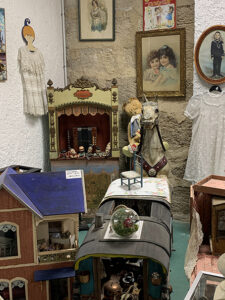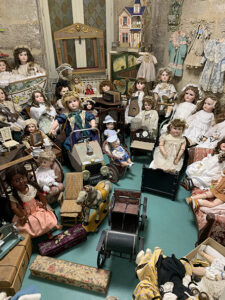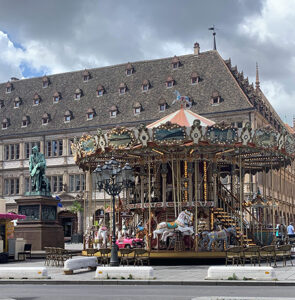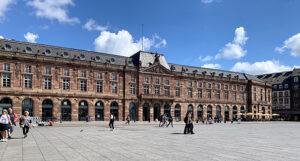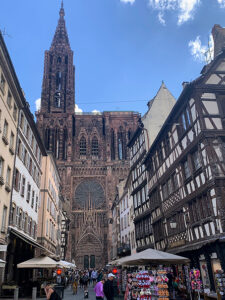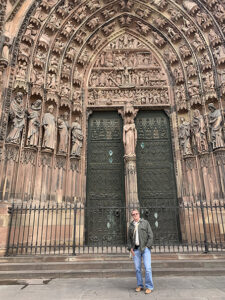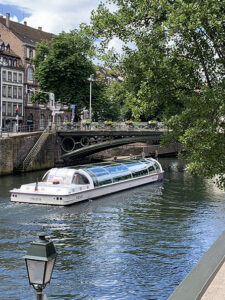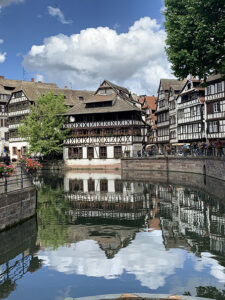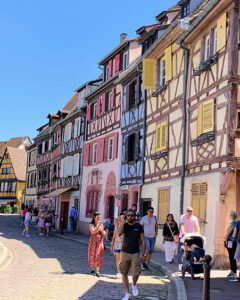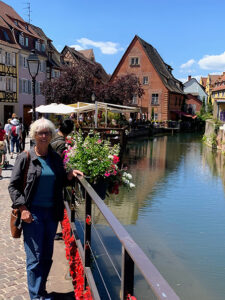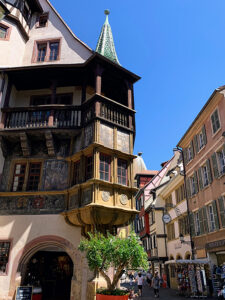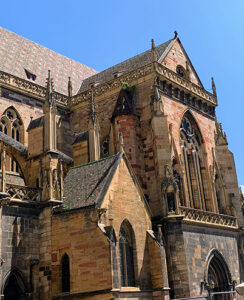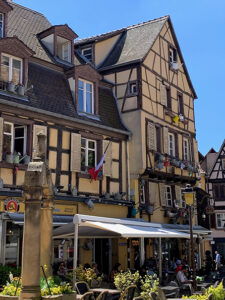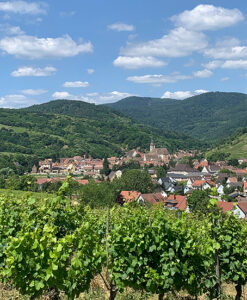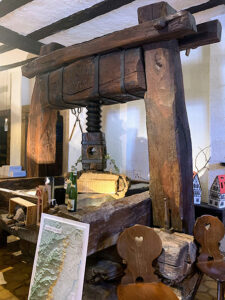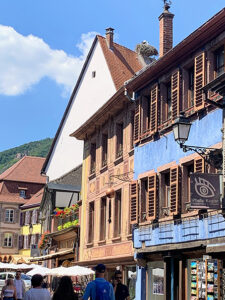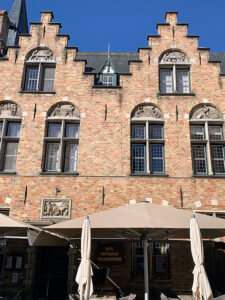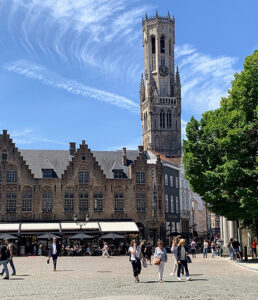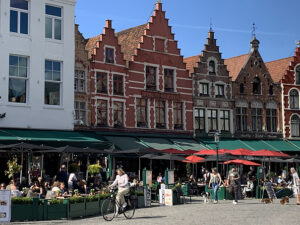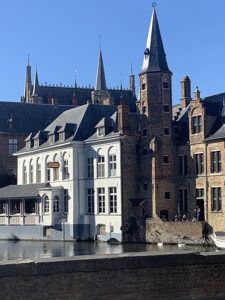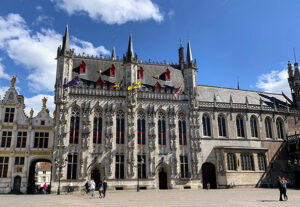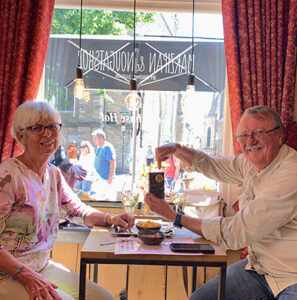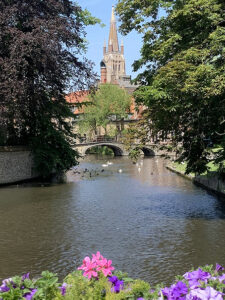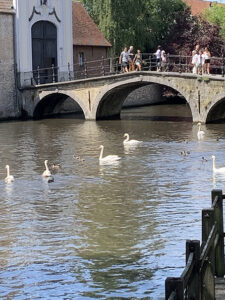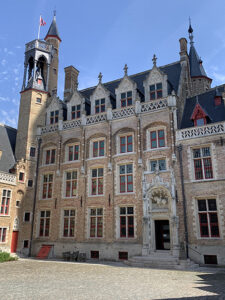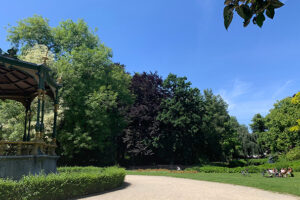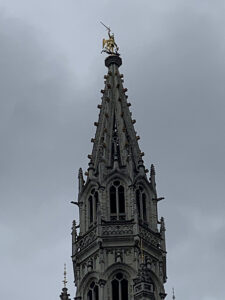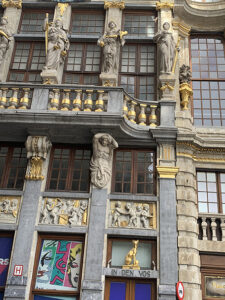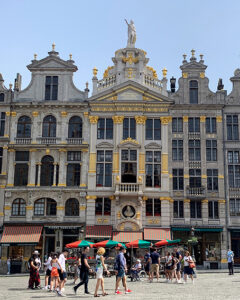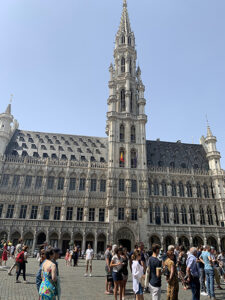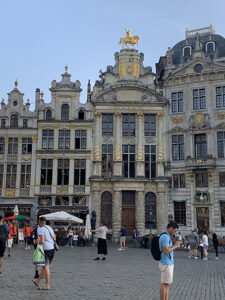Marseille
We started our spring travel to France in Marseille, which is not in Vaucluse Department of France. We stayed for a couple of days to visit two museums that we missed seeing previously before taking the train to the Vaucluse Department where our village is located.
The first day we visited Mucem, the Museum of European and Mediterranean Culture. This museum is spread across three sites. The Saint Jean Fort is at the entrance of the harbor being an integral part of Mucem. It was constructed in the 16th century for military defense. There is free access for exploring the outdoor spaces capturing scenic views of Marseille harbor and the surrounding hills. To see the exhibitions in the other sites payment of a small fee is required, well worth it. There is also a garden section, including a variety of herbs. A footbridge crosses over to a more recent building. Here there are two places of exhibitions, one showing the steps of Mediterranean civilizations, the second one is for temporary exhibitions. There is also a panoramic restaurant where we enjoyed a delightful lunch. The third site houses the conservation and resource center. Finally, there is another footbridge that crosses over to the Panier district.
The next day we visited the Marseille History Museum. The building is located surrounding an archeological site. There are exhibitions displaying artifacts found at the site stemming from the then Greek and Roman city. Walking through this museum is like walking through a time machine exhibited by artifacts, multi-media displays. 3-D reconstructions and sound scopes. Outside one can see an exoskeleton of a Greek and Roman boat with further displays inside showing how the boats were constructed. Throughout the museum traces the history from prehistoric occupations to current occupations. For more photos and information: https://en.martigues-tourisme.com/history-museum-of-marseille.html
Vaucluse Visits
L’Isle sur la Sorgue & Avignon
After two days of learning more about Marseille we boarded the train to our village, L’Isle sur la Sorgue in Vaucluse Department. After the rains during the winter, we were pleased to see the water level on the canals had risen, no longer the way we saw it last fall after years of drought. The trees were sprouting new bright green leaves and there were spring flowers all around, including fields of poppies, even alongside the train tracks, and especially tall purple irises, my favorite flower. Meanwhile we were still waiting for our suitcases that had taken their own journey through England and Norway before arriving in France. They were finally delivered ten days later and dropped off at a supermarket. It was a lovely day so we enjoyed our one mile walk to retrieve them!
We received notice that we needed to go to the Préfecture in Avignon to receive the “residence card” that we applied for to stay in France for up to a year preferably more than 183 days. We always enjoy staying in Avignon and we took an extra day to visit familiar places. It is a nice walk to the Prefecture and on our way back with our new cards we stopped at Les Halles. Les Halles is a huge indoor market selling all kinds of fruits, vegetables, seafood, meats, pastries, wines, cheeses, etc. The doors had just opened and we decided it was time for a cup of coffee. Just as we walked in, we noticed over to our right a small café. While sipping our coffee we proudly showed the two young ladies our new cards. One of the ladies was the owner and she opened a bottle of champagne for the four of us to celebrate. There is nothing like coffee and champagne at 10:30 in the morning!!
Le Thor

Back in our apartment in L’Isle we decided to take a bus trip to Le Thor. This is a smaller village, just a 15-minute bus ride to get there. We got off at the Hotel de Ville (town hall), a short walk to the town center. It was Saturday and market day, so we strolled past all the different stalls selling fresh foods, cooked foods, clothing, cleaning supplies and works by the local artists. I found a small purse that I had been looking for and can now stop looking. We wandered around town toward the Notre Dame du Lac Church just as mass ended. The church bells loudly pealed for at least 5 minutes. The church dates to the 12th century. It is Romanesque with Gothic vaults, the “oldest in Provence”. We walked past the Donzabas Gate with the town’s clock and an iron bell tower. Wandering further we came to a bridge crossing the Sorgue River. There were steps going down to a small park with a picnic bench on the bank of the river. We will return another time to enjoy a peaceful picnic listening to the flowing river.
Wandering further we came to a bridge crossing the Sorgue River. There were steps going down to a small park with a picnic bench on the bank of the river. We will return another time to enjoy a peaceful picnic listening to the flowing river. There are many hiking trails leading from this town. One of them leads to Thouzan Castle, and to the Grotte de Thouzon. This is a natural underground cave with stalactites and listed as the only cave in Vaucluse department developed for tourism. We will return to discover this destination. For lunch we stopped at Café Rosa Bonheur and recommend it for aperitifs and some delicious food. There are other restaurants, but we can only try one at a time.
There are many hiking trails leading from this town. One of them leads to Thouzan Castle, and to the Grotte de Thouzon. This is a natural underground cave with stalactites and listed as the only cave in Vaucluse department developed for tourism. We will return to discover this destination. For lunch we stopped at Café Rosa Bonheur and recommend it for aperitifs and some delicious food. There are other restaurants, but we can only try one at a time.
Fontaine de Vaucluse
L’Isle sur la Sorgue is in the Vaucluse Department of Provence, France. When a friend came to visit, we decided to visit some of the other villages and sites in this department. In the village of Fontaine de Vaucluse, we followed the path leading to the source of the Sorgue river. This river runs through many villages, and it is the source of the canals surrounding L’Isle sur la Sorgue. We followed the path upstream to the pool, a deep water spring from the underground network of caves. We listened and watched as the water roared and bubbled over the boulders as it descended to the village. To learn more about the caves we took the Underground World Tour (Musée du Monde Souterrain). Our guide showed photos and graphs of the exploration of the caves. There were divers, including Jacques Cousteau who after three tries reached 104 meters, a German diver reached 205 meters. The Speleological Society continued the research, using an instrument called Sorgonaute. This allowed exploration of various caves. We were led through the reconstructed caves of the underground river through caves showing frescoes of prehistoric drawings on the walls of animals, and also handprints painted on the walls. The tour ended with a visit to a large room displaying showcases of stalactites collected in France by Norbert Casteret over a 50-year period. There were 400 hundred stalactites of different shapes and sizes that he collected in limestone caves, included some that looked like delicate fragile needles that managed to survive transportation. It was an amazing display. It was time for a delightful lunch alongside the river and time to walk around this lovely village.
Abbaye Notre Dame de Senanque
A short drive to the north of Gordes is the Abbaye Notre Dame de Senanque. This Abbaye is only one of the three Provençal abbeys in the Cistercian style of the Romanesque period. It was founded in1148 by the Cistercian monks. Today there is still a community of monks following the rules of Saint Benedict in this abbey. The architecture of the church is in the shape of a cross. We took a self-guided tour through the rooms and the garden in the courtyard. The “Church” is visited four times during the day for worship. We admired the simplicity of the stain-glassed windows, with only a few colored panes of glass to let in pure light. There are symbols inscribed in the architecture for understanding the rules of Saint Benedict.
The “Church” is visited four times during the day for worship. We admired the simplicity of the stain-glassed windows, with only a few colored panes of glass to let in pure light. There are symbols inscribed in the architecture for understanding the rules of Saint Benedict. The “Warmer” is the only room that has heat, heated by a large fireplace in the center of the room. The only other heat is from the kitchen. Here is where the monks used it for reading, meditation and coping manuscripts. Today it is notably used for the Easter vigil.
The “Warmer” is the only room that has heat, heated by a large fireplace in the center of the room. The only other heat is from the kitchen. Here is where the monks used it for reading, meditation and coping manuscripts. Today it is notably used for the Easter vigil.
The “Cloister” is the center of the abbey. It has four galleries with no outside view except for facing the center courtyard garden. Each gallery has a specific role. The east gallery is reserved for spiritual activities. The north gallery is where the works of the abbey is located, and locked up at the end of the day. The west gallery is for bodily functions such as washing hands before meals. The south gallery is a passageway and used for processions. The “Chapter” is the meeting room used every evening. A chapter of Saint Benedict’s rule is read by the Father Abbot followed by discussions of community life.
The “Chapter” is the meeting room used every evening. A chapter of Saint Benedict’s rule is read by the Father Abbot followed by discussions of community life.
Since the Rule requires silence by the monks, silence is requested throughout the visit. We enjoyed the idyllic setting. We only wished we could have seen the lavender fields around this setting. They were soon to be in full blossom.
Beaumes-de-Venise
Beaumes-de-Venise is just north of Carpentras along the wine route. It is a village on the hillside at the foot of the Dentelles de Montmaril, a small chain of mountains near Mont Ventoux. This gives this village protection from the Mistral winds. Baumes, also named Balmes in the Provençal language, are caves seen in the hills. There are many walking, biking and hiking paths to discover the crops grown in the terraces, vineyards, an olive mill and La Chapelle Notre-Dame. Today we used a map from the Office of Tourism to discover the historical center in the Place de L’Église. Being Market Day, we browsed the stands selling local foods and handcrafts. The church bells then alerted us that it was noon and so we found a nice restaurant across from the church L’eglise Saint Nazaire, a 16th century church in the center of the square. Leaving the restaurant we followed the map while walking through hidden passageways and wandering narrow streets and alleys. We came to Portail Neuf, an entrance to the house of the Lord of Beaumes. Because he wanted to have easier access to his chateau, he had a gate opened into the rampart wall. There is a staircase to the right that leads you up the winding streets to an open-air theater. However, all that remains are a few walls. Proceeding back down through some alleys we stopped at Place de la Liberté which was surrounded by colorful houses, quite picturesque. At one time the attics were used to raise silkworms! Further on we passed under the Porte de la Touve. This door was opened in the ramparts from1775 to 1777. “Touvo” is the Provençal word for the pipe that drained the water from the olive pit mill. We are now back in the village center where we look at a fountain, La Fontaine de Mascarons, dated 1639. It is in the shape of a big conch shell with four heads that spill out water. However, today there was no water. Before leaving we stopped at a wine cellar on Rue Raspail to taste the ‘famous’ Muscat de Beaumes-de-Venise. This is a natural sweet wine therefore not too sweet. The Tradition vintage is recommended as an aperitif and the Bois Dore vintage is recommended to drink with an entree. Of course we purchased a bottle. Beaume-de-Venise is also known for its excellent Côtes du Rhone red wine. As we were now tired, we slowly drove back to L’Isle taking the slower, less traveled roads through the countryside.
Thouzon Caves – Le Thor
We returned to Le Thor this time by car. Having a friend with us, we strolled through the Donbas gate noting the town clock and campanile and visited the Notre-Dame-du-Lac church looking up at the Gothic vaults in the nave. We also strolled past the bridge over the Sorgue River and walked down to the small Island underneath enjoying the sounds of the birds and the flowing river. There had been many water wheels which provided the power of flour, paper, silk and sawmills. There is still one water wheel that was restored in 2012. In the 19th century there were madder production factories. Madder is a root that when ground and powdered was used to dye the pants of the French army soldiers. After lunch with some chilled rosé wine, we drove 1.5 km to the Thouzon Caves discovered in 1902. We took the tour and were guided along a path, once an underground river, 230 meters to the gallery. The guide pointed to an oak root that had found its way through 10 meters of limestone. Also, we saw stalactites and some that were very thin and hollow called macaronis. One that he pointed to was 1.30 meters (51 inches) and since stalactites grow only 13 cm every 100 years this one was 13,000 years old. The water originally flowing dried up the limestone and left a ceiling of hard grey rock called flint. We continued our tour viewing more stalactites of many shapes and colors, roots, pools and dams. At the end there is a well (12 meters deep) and the last tunnel (15 meters long) that is not accessible to tourists while awaiting more exploration. For further information and photos and at the end there is a short film of the tour (in French) visit www.grottes-thouzon.com
 There are many walking and cycling tours from the Le Thor village. Follow and enjoy views of Vaucluse, Mont Ventoux and the lavender fields (in blossom in July).
There are many walking and cycling tours from the Le Thor village. Follow and enjoy views of Vaucluse, Mont Ventoux and the lavender fields (in blossom in July).
2024 Paris Olympic Torch Relay
L’Isle sur la Sorgue was selected to host the passage of the Olympic torch relay on May 19. The center of L’Isle is an island and the route followed the roads alongside the canals that circle the center of the city. People were lined up on the sides of the roads waving and cheering as that flame passed by. Everyone was in a joyous mood. We were thrilled to be there among all those cheering.
